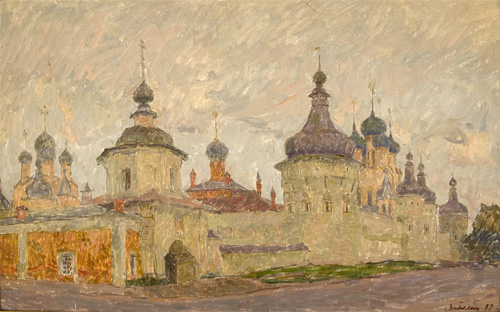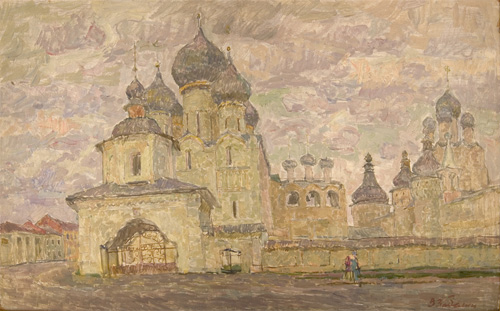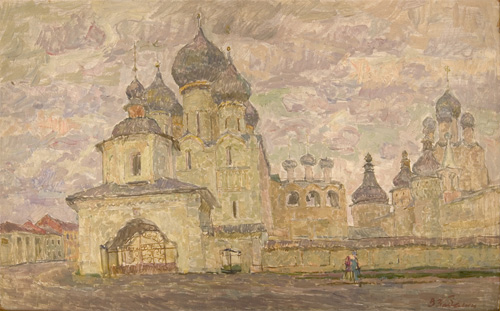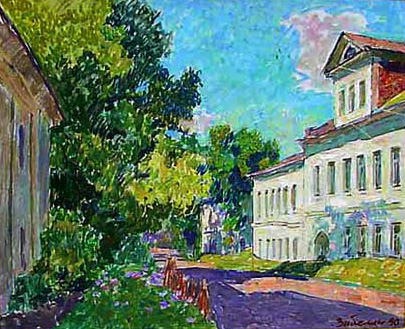On the shore of Lake Nero, sits Rostov. Rostov is a part of the Golden Ring near Moscow. Unique because they are monuments to Russian architecture, the Golden Ring is an example of the Russian Orthodox Church. This is due to them being made up of medieval kremlins, monasteries, cathedrals, and churches. Some have become more modern than others as the years have passed. Rostov has remained in it’s old traditional Russia charm.
Rostov has existed historically as a religious center. Monk Jonah Sysoevich had the kremlin built from 1670- 1683 around the existing Dormition Cathedral. However, in the 18th century as Yaroslavl grew, Rostov was on the decline. Thanks to the fertile shores of Lake Nero, Rostov was able to maintain some status as a trade center. Even so, some wanted to tear part of the kremlin down for better storage for better trade as the 19th century approached. Thanks to artists, historians, and other concerned peoples, it was saved as a symbol of medieval culture. Then in 1953 a storm caused significant damage and another group of people had to rally for restoration. I imagine Zabelin was a part of this group, he even did some restoration work.
For a more in-depth history you can click here. For history about the architecture you can click here.
While researching the history of Rostov, I got distracted by a few travel websites mentioning how a cathedral in Rostov is pink? This was interesting because when I was at Rostov I did not notice anything pink. Naturally, I swept through some photos of mine:

 St. John the Theologian’s Gate-Church, the church with the most vividly green onion domes, is supposedly pink. In my images, and from my memory, of my summer 2016 trip- it is not pink. Below is an image of the Kremlin, taken in 2009. I guess restoration work was done at least between 2009 and 2016. Regardless, this changes how I see Rostov as the subject manner in art.
St. John the Theologian’s Gate-Church, the church with the most vividly green onion domes, is supposedly pink. In my images, and from my memory, of my summer 2016 trip- it is not pink. Below is an image of the Kremlin, taken in 2009. I guess restoration work was done at least between 2009 and 2016. Regardless, this changes how I see Rostov as the subject manner in art.

Here are some other depictions of Rostov:
 ‘The Rostov Kremlin’ by Konstantin Yuon
‘The Rostov Kremlin’ by Konstantin Yuon
 Finift depicting the Rostov Kremlin
Finift depicting the Rostov Kremlin
Since pink is a beautiful yet unusual color for buildings, I assumed the pink was used to provide contrast between the white snow or sky, a shadow, or quite frankly, I didn’t notice pink was used. However, it adds to the allure of Rostov knowing it can be repainted, and restored time and time again but still hold on to it’s medieval, and artistic roots.
Zabelin is praised for his true colors. Similarly to the impressionists he painted moments in time sensitive to how light and color coexist. I believe the pinkness to the buildings only added a mystical quality to the sleepy town of Rostov. A bright sky, some bright white and soft pink building, bright green grass, and medieval feel basically lends it’s self to be painted in an impressionist manner. In the images below you can see some pink undertones and washes. Zabelin, Rostov Evening, 1986, detail
Zabelin, Rostov Evening, 1986, detail  Zabelin, Kremlin in Rostov, 1987
Zabelin, Kremlin in Rostov, 1987


 Vyacheslav Zabelin, Rostov Veliki, Oil On Canvas, 1973
Vyacheslav Zabelin, Rostov Veliki, Oil On Canvas, 1973 Vyacheslav Zabelin, Street in Rostov, Oil on Canvas, 1990
Vyacheslav Zabelin, Street in Rostov, Oil on Canvas, 1990 Vyacheslav Zabelin, Monastery in Rostov, Oil On Canvas, 1986
Vyacheslav Zabelin, Monastery in Rostov, Oil On Canvas, 1986